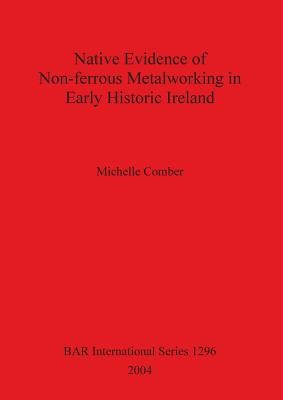
- We will send in 10–14 business days.
- Author: Michelle Comber
- Publisher: British Archaeological Reports Oxford Ltd
- ISBN-10: 1841713805
- ISBN-13: 9781841713809
- Format: 21 x 29.7 x 1.7 cm, softcover
- Language: English
- SAVE -10% with code: EXTRA
Native Evidence of Non-ferrous Metalworking in Early Historic Ireland (e-book) (used book) | bookbook.eu
Reviews
Description
Between the 5th and 12th centuries Ireland was responsible for some of the most beautiful decorative work in bronze, silver and gold in Europe. This study focuses on the archaeological and industrial context of these objects, an area, Michelle Comber argues, that has been largely overshadowed in favour of aesthetic appreciatopn. Based around a gazetter of sites of production and an ilustrated catalogue of over 350 metalworking finds recovered from Lagore crannog im County Meath (principally crucible fragments, moulds, motifs, tools and wires), the thesis also examines literary evidence, the technology of non-ferrous metalworking, and the types of places where metalworking and trade took place. The case study of Lagore crannog is also discussed in some detail.
EXTRA 10 % discount with code: EXTRA
The promotion ends in 17d.13:11:12
The discount code is valid when purchasing from 10 €. Discounts do not stack.
- Author: Michelle Comber
- Publisher: British Archaeological Reports Oxford Ltd
- ISBN-10: 1841713805
- ISBN-13: 9781841713809
- Format: 21 x 29.7 x 1.7 cm, softcover
- Language: English English
Between the 5th and 12th centuries Ireland was responsible for some of the most beautiful decorative work in bronze, silver and gold in Europe. This study focuses on the archaeological and industrial context of these objects, an area, Michelle Comber argues, that has been largely overshadowed in favour of aesthetic appreciatopn. Based around a gazetter of sites of production and an ilustrated catalogue of over 350 metalworking finds recovered from Lagore crannog im County Meath (principally crucible fragments, moulds, motifs, tools and wires), the thesis also examines literary evidence, the technology of non-ferrous metalworking, and the types of places where metalworking and trade took place. The case study of Lagore crannog is also discussed in some detail.


Reviews